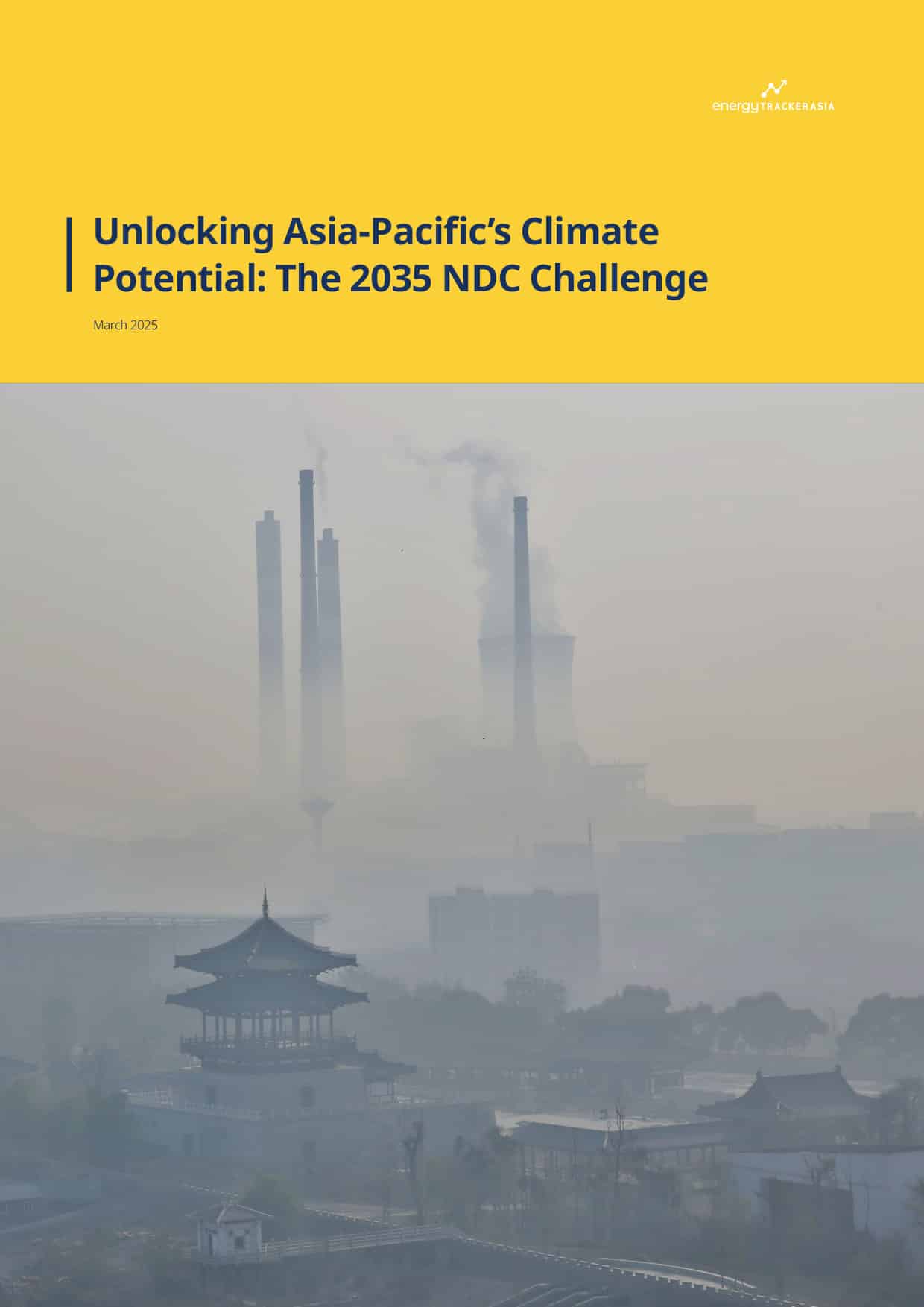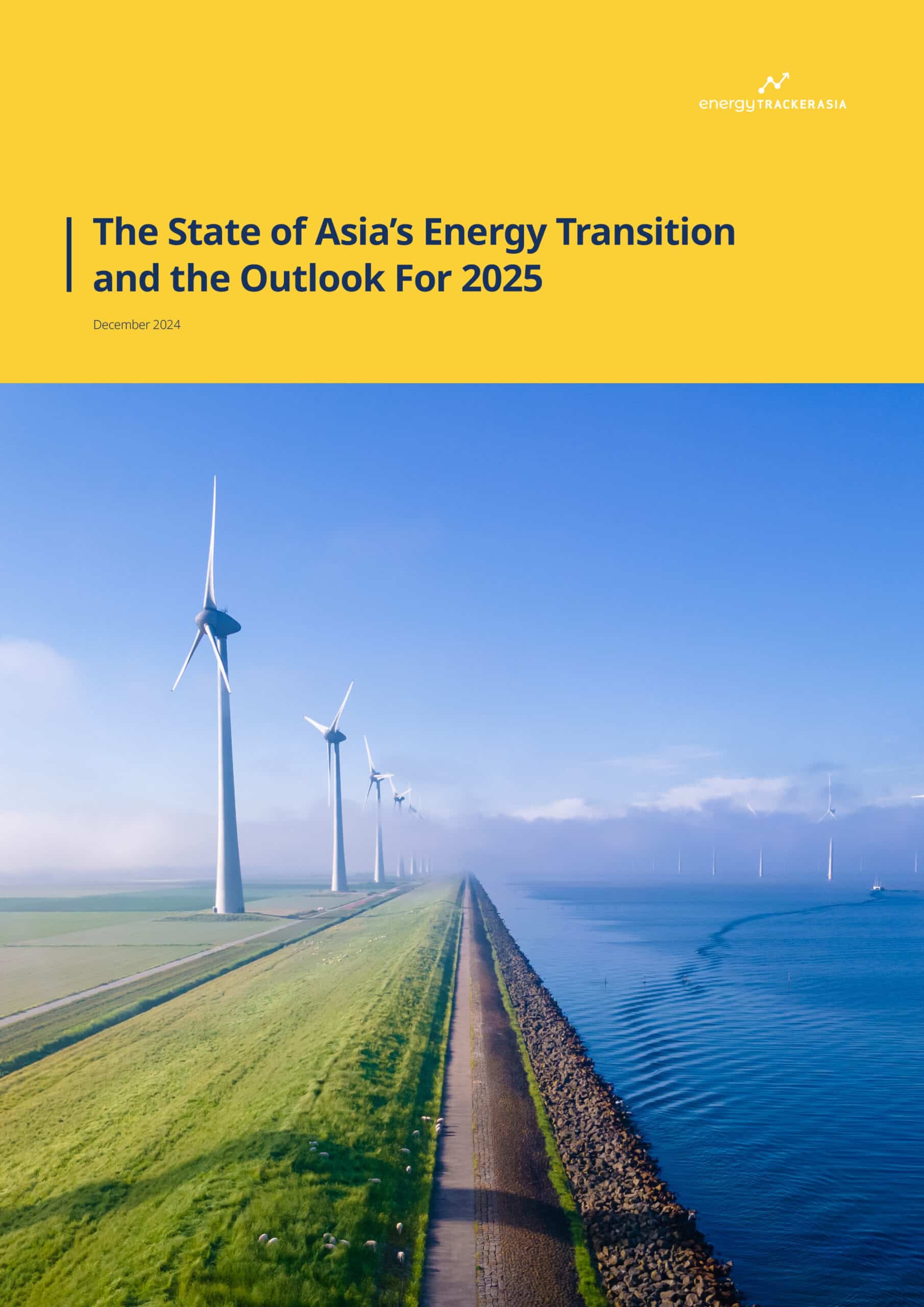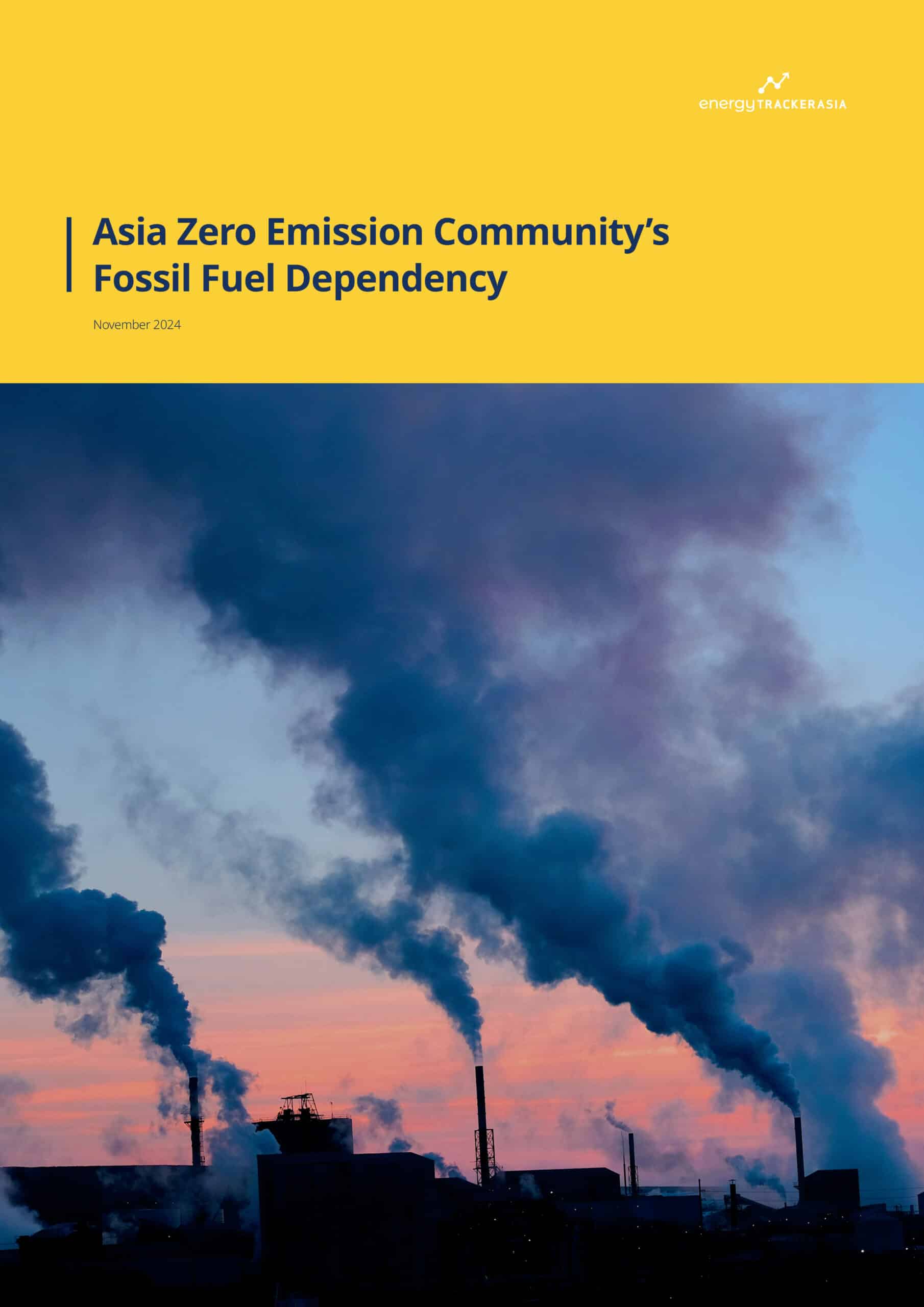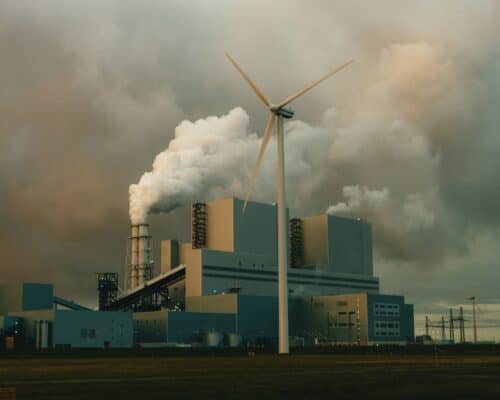Trump Quits the Paris Agreement: The Consequences
12 February 2025 – by Viktor Tachev
One of the first things US President Donald Trump did as soon as he entered office was to pull the US out of the Paris Agreement for the second time. The country joined the likes of Iran, Libya and Yemen, in not participating in the global treaty. Although the move was expected, it doesn’t soften the blow to global climate action.
However, experts are clear. The global clean energy transition and green economy are accelerating and can’t be stopped. While Trump’s order will undermine the US’ role in them, it will open opportunities for other nations to step in and lead the world toward a more sustainable future. Without the financial contributions of the US and global emissions continuing to increase, the most climate-vulnerable nations may feel additional pressure while trying to cope with climate change.
Donald Trump Pulls the US Out of the Paris Agreement For the Second Time in 2025: The Reactions
Democratic Party representatives were quick to condemn the president’s move, calling it an “extremist”, “a cowardly withdrawal”, and an act of “climate denialism.”
The leaders of the EU and China also criticised or voiced concern over the decision.
Climate-vulnerable nations, expected to suffer the greatest consequences, also expressed frustration. Papua New Guinea’s Prime Minister James Marape said he was concerned about the future of his country and other Pacific nations and urged Trump to reconsider his decision. The group of the least developed countries in the UN climate negotiations warned that the move puts their vulnerable nations at even greater risk.
According to André Corrêa do Lago, Brazil’s COP30 chief, the US’ withdrawal will make it much harder to curb global warming.
While the decision is a big blow to global climate action, the new administration hasn’t yet indicated ambitions to pursue more drastic action, such as leaving the 1992 United Nations Framework Convention on Climate Change – the umbrella agreement responsible for hosting annual climate negotiations, known as COPs. However, analysts note that calls from climate sceptics within the president’s circle to go down that route are increasing.
The Impact of the US Withdrawal From the Paris Agreement on Global Warming and Climate Action
The last time the US left the Paris Climate Agreement lasted just four months before the country joined again. Yet, it was enough to disrupt international climate diplomacy and tarnish the country’s climate leadership. The move also halted essential contributions to climate finance, leaving developing nations without vital support for mitigation and adaptation.
This time, the impact is likely to be more substantial, considering that the global climate system is in a worse state, with the carbon budget quickly depleting. According to most scientific studies, the world is on course to warm by between 2.3°C and 3°C by 2100. The IPCC warns that, without an urgent emissions reduction, the world will pass a dangerous temperature threshold within the next 10 years, pushing the planet past the point of catastrophic warming. Other estimates reveal that the remaining carbon budget is sufficient for the next five to six years, after which the world will permanently breach 1.5°C.
During 2024, carbon emissions increased more than ever, hitting record-high levels. Furthermore, the past year became the first to officially break the 1.5°C threshold.
United States is the Second-biggest Emitter of Greenhouse Gas Emissions
The US is the world’s second-biggest GHG emitter after China. Under former President Joe Biden, the country announced an economy-wide target of reducing its net emissions by between 61% and 66% by 2035, compared to 2005 levels. While it has already slashed its emissions by 20%, the country would need a 10 times faster yearly reduction than in the past decade to meet its climate goals.
This is an unlikely scenario, considering Trump’s plans. According to experts, withdrawing from the Paris Agreement essentially negates the target and the NDC.
A Blow For Wind Power and a Promise To Scale Up Fossil Fuels
On its first day, Trump’s administration suspended new offshore wind power leasing. The president accused “big, ugly windmills” of ruining neighbourhoods and beaches and killing birds and whales, as Reuters reports. Yet, according to research, house cats kill far more birds in the United States yearly. Trump also reiterated his campaign promises to prioritise drilling for fossil fuels.
In light of this, the Union of Concerned Scientists described Trump’s decision as “disgraceful and destructive” and branded his administration “cruelly indifferent to the harsh climate change impacts that people in the United States and around the world are experiencing”. Greenpeace, 350.org and other organisations also condemned the decision, vowing to keep fighting against climate change.
According to Carbon Brief, Trump’s second term would result in 4 billion tonnes in additional emissions. This equals the combined annual emissions of the EU and Japan and would negate twice the savings from deploying wind, solar and other clean technologies worldwide over the past five years, causing global climate damage worth over USD 900 billion.
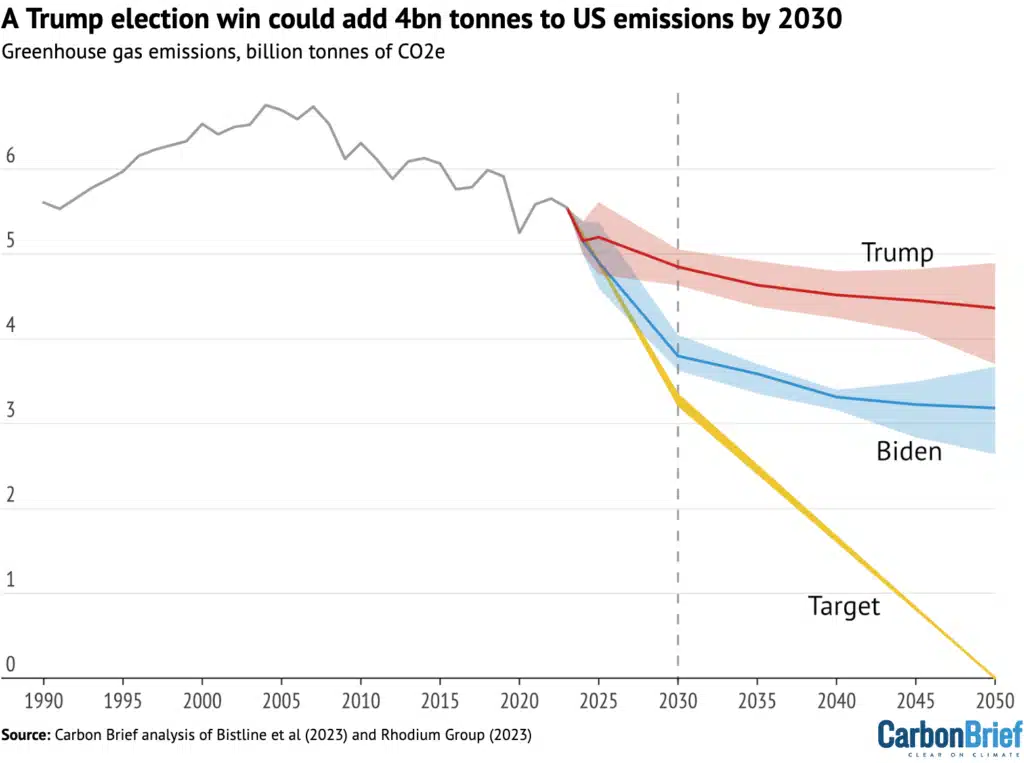
Derailing the Global Climate Dialogue
The US withdrawal from the Paris Agreement would take effect a year after submitting the required letter of intent. In the meantime, the country can continue participating as a party to the Paris Agreement, including COP30 in Brazil.
However, a decision to attend the talks in November will do more harm than good to the global climate dialogue, with Trump-backed negotiators potentially destabilising negotiations. According to some analysts, potential moves could include weakening deals and advocating against climate action, similar to Saudi Arabia’s moves at COP29 in Baku, Azerbaijan. Experts also say that the Trump presidency could cause other countries to follow suit or embolden petrostates to be much more vocal in their defence of fossil fuels.
Destabilising Climate Financing
Trump has already ceased the US funding for UN climate talks. Since the country is responsible for 21% of the budget of the UN’s climate secretariat, which leads global climate change negotiations, its withdrawal will likely worsen the already severe funding shortfall. Reuters estimates that the decision will likely cost poorer nations at least USD 11 billion, significantly affecting their efforts to cope with climate change.
It also remains uncertain as to how Trump’s course of action will affect international financing mechanisms for climate action, such as Indonesia and Vietnam’s JETPs of which the US has a big contributing role.
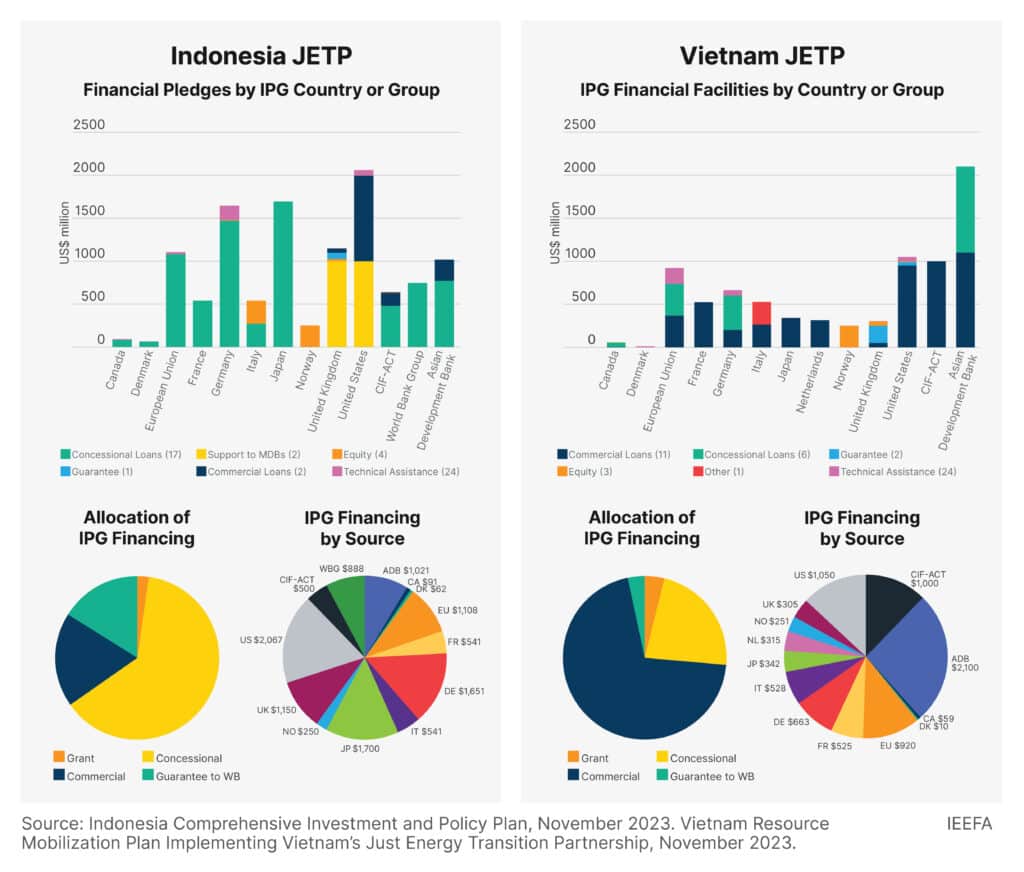
A Potentially Costly Move For the US Economy
The US is among the countries that have suffered the most from weather, climate and water-related hazards. Since 1980, it has been hit by over 400 weather and climate disasters, exceeding overall costs of USD 1 billion. Just this year alone, the LA wildfires, which man-made climate change has made 35% more likely, are projected to cost between USD 250 billion and 275 billion.
While Trump has a history of denying climate science, he motivated his move by describing the Paris Agreement as an “unfair, one-sided Paris climate accord rip-off”.
According to experts, Trump’s moves mean the US is giving up political influence and passing up opportunities to shape the exploding green energy market. They also warn of an unstoppable economic momentum behind the global energy transition, which the country risks not capitalising on.
A leaked memo by the American Clean Power Association from Feb. 5 reveals that chaos within the Trump administration has paralysed environmental permitting decisions on solar and wind projects, including those on private lands. As a result, clean project developers are left in limbo, struggling to get clarity on what comes next.
Despite the US wind energy sector’s growth, Trump called wind turbines “an economic and environmental disaster“. While he hasn’t gone against solar in the same way as wind so far, his position remains uncertain. On the one hand, he mentioned being a “big fan” of it. However, he also criticised solar power for its land requirements and for harming rabbits. Still, any potential plans to place additional tariffs on China could impact US solar projects, often paired with imported battery storage systems.
Analysts say Trump’s moves could damage the US economy, pointing to global investments in clean energy technologies at the expense of fossil fuels. For example, in 2024, the world invested twice as much in clean energy, USD 2 trillion, as fossil fuels, USD 1 trillion. In the US, the ratio in 2023 was already lower than the global average, with USD 1.40 spent on clean energy for every dollar going to fossil fuels.
The We Mean Business Coalition, backed by Amazon and Meta, warned Trump’s disruption of the US business environment could drive green investment elsewhere.
Trump also pledged to revoke the Environmental Protection Agency rule requiring auto manufacturers to cut greenhouse gas emissions by half in new light- and medium-duty vehicles from 2027. In an interview for the New York Times, Gina McCarthy, former White House climate advisor and former head of the Environmental Protection Administration, said that such a move would hand “the clean-car keys to the Chinese”.
Another potential impact of exiting the Paris Agreement is that US businesses won’t be able to sell carbon credits into the UN-backed carbon market that could be valued at more than USD 10 billion by 2030.
According to Reuters, the move will also complicate the situation for US banks and money managers with European clients.
The UN’s Climate Change Executive Secretary Simon Stiell say that with the withdrawal, the US risks losing massive profits, millions of manufacturing jobs and clean air, as well as sending “vast wealth” to competitor economies.
Democratic Party representatives said that the IRA, introduced by Biden, has already created over 400,000 jobs and added USD 420 billion in clean energy investments within the country. They warned that Trump’s actions could put this progress at risk and promised to continue fighting climate change and creating jobs and a “healthy environment”.
Not a Popular Call on the Domestic Stage
According to a poll by the Associated Press and the NORC Center for Public Affairs Research, the anti-climate agenda isn’t popular among both Democrats and Republicans. Just two in 10 US adults say they are “somewhat” or “strongly” in favour of withdrawing from the Paris Agreement, while half oppose withdrawing at all. About 40% of the voters in the 2024 presidential election said US energy policy should focus on expanding the production of fossil fuels, while 55% consider it better to prioritise scaling up clean energy, such as solar and wind.
There are even reports that Trump’s decision to quit the Paris Agreement and reverse crucial climate policies is facing opposition from close allies. The oil and gas producers, among his biggest supporters, said that the move won’t help their investment plans in the global transition to cleaner energy.
Many red states and fellow Republicans aren’t thrilled either. According to analysts, since the Biden-era laws provided a decade of lucrative subsidies for new solar, wind and other clean energy projects, they are well-supported by Republican states, making them “near-impossible to repeal”. Reuters notes that many of Trump’s allies and fundraisers are benefiting from the IRA’s lucrative tax credits thanks to big investments in solar power, electric vehicles, carbon sequestration, hydrogen and other clean energy technologies and stand to lose big if Trump follows through on his promise to gut Biden’s climate laws. During Trump’s first term, there was a major clean energy boom, with around 80% of the funding flowing into EVs, batteries and other clean energy technologies in red states.
A group of 18 Republican lawmakers representing districts that drew IRA-linked investments last year issued a letter against revoking all of the IRA if the party won control of the House and Senate.
Furthermore, over 5,000 state and local leaders in the US, representing 63% of the US population and 74% of the country’s GDP, united behind the America Is All In initiative. They pledge to uphold the goals of the Paris Agreement, continue climate action and advance the transition to green energy, even after the country is outside the Paris Agreement. In a separate initiative, the US Climate Alliance, governors in 24 states and territories, representing approximately 55% of the US population and 60% of its economy, have also pledged to work to secure America’s net-zero future.
Huge Opportunities For Others to Lead the Global Energy Transition
With the Paris Agreement withdrawal, the COP30 chief recognised an opportunity for countries like China, India, and Brazil to step in and lead global climate talks.
After Trump’s first withdrawal from the agreement, the EU became more ambitious, and China evolved from co-leadership with the US to sole leadership in the green energy transition and never looked back. Both regions are again expected to fill the vacuum, and there are chances for increased collaboration on the climate and energy fronts.
According to US Democratic Party members, as well as experts from the Asia Society Policy Institute, China stands to win from Trump’s latest move, while the US risks lagging further behind. Due to Trump’s plans to retreat from clean technology manufacturing, China is even more likely to cement its position as a global leader in solar panels, wind turbines, battery technology and EV manufacturing and exports.
Furthermore, Australia has already expressed hopes to lure “tens of billions of investor dollars” in renewable energy investment from the US after Trump’s election and the decisions of major US banks to ignore climate targets and action.
S&P Global Commodity Insights expects Trump’s policies to open up lower-priced crude oil export opportunities for some Asian oil importers. Carbon Brief identifies India as a country that is likely to increase its US oil and gas purchases. However, analysts believe this won’t be the case for China. In response to the Trump administration’s decision to impose an additional 10% tariff on all imports of Chinese goods, China slapped import duties of 15% on US coal and LNG and 10% on crude oil. As a result, experts say the trade in fossil fuels between the two countries is “effectively dead”. Yet, due to China’s robust clean energy deployment growth and the not-so-strong reliance on US energy imports, the immediate impact is likely to be limited.
For Southeast Asia, one of the most vulnerable and significantly affected regions by climate change, Trump’s decision to quit the Paris Agreement and scale up fossil fuel production will likely exacerbate the climate crisis’ impacts that frontline communities have been dealing with. Furthermore, a more restrictive green financing policy from the new US cabinet means that capital provision for programs like the JETPs of Indonesia and Vietnam could be at risk.
Climate Action Continues Amid the US-shaped Hole in the Paris Climate Agreement
The head of the World Bank urges that the events taking place in the US shouldn’t distract from the obligations of countries like India, Brazil, Indonesia and Vietnam to reduce their emissions rapidly.
Analysis shows that even without federal support, actions from non-federal actors in the US can achieve over 48% of emissions reductions by 2035. Furthermore, US state-level actors have reportedly long been collaborating with China and other stakeholders to continue advancing climate leadership.
Notably, the EU and China are well aware that global climate action is now in their hands. With or without the US, the signs are that the rest of the world will remain committed to climate change adaptation and mitigation. It will just have to do more.
by Viktor Tachev
Viktor has years of experience in financial markets and energy finance, working as a marketing consultant and content creator for leading institutions, NGOs, and tech startups. He is a regular contributor to knowledge hubs and magazines, tackling the latest trends in sustainability and green energy.
Read more